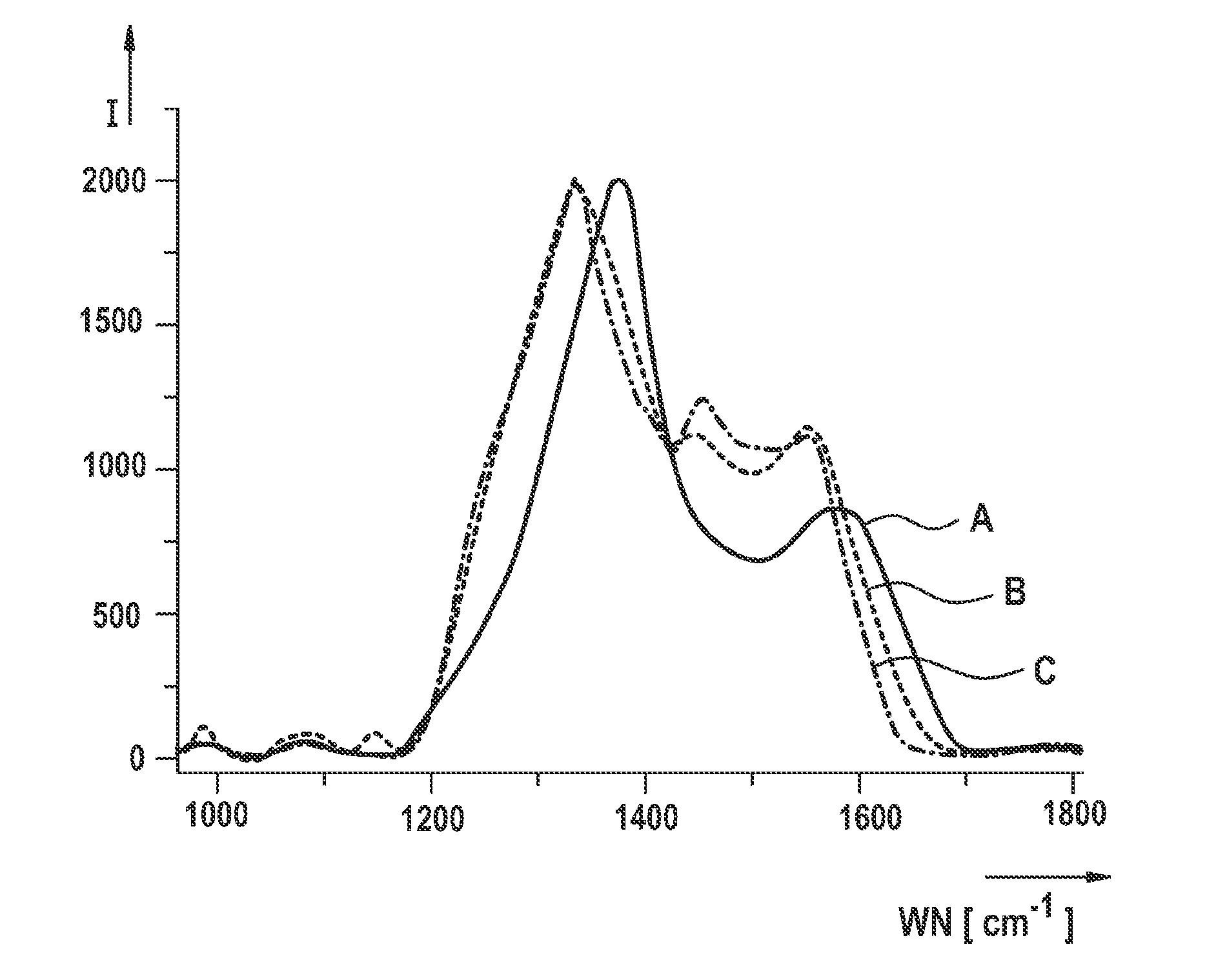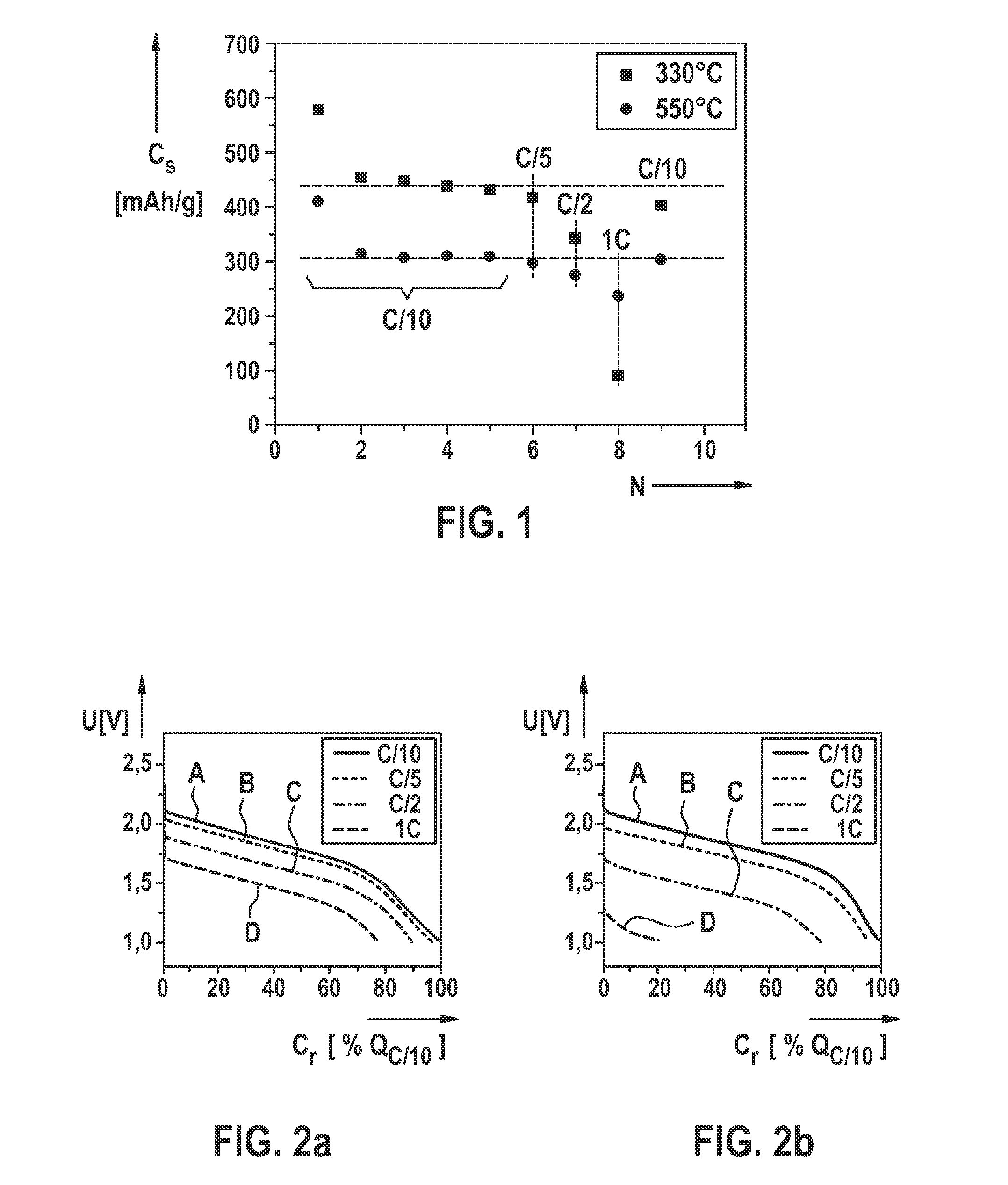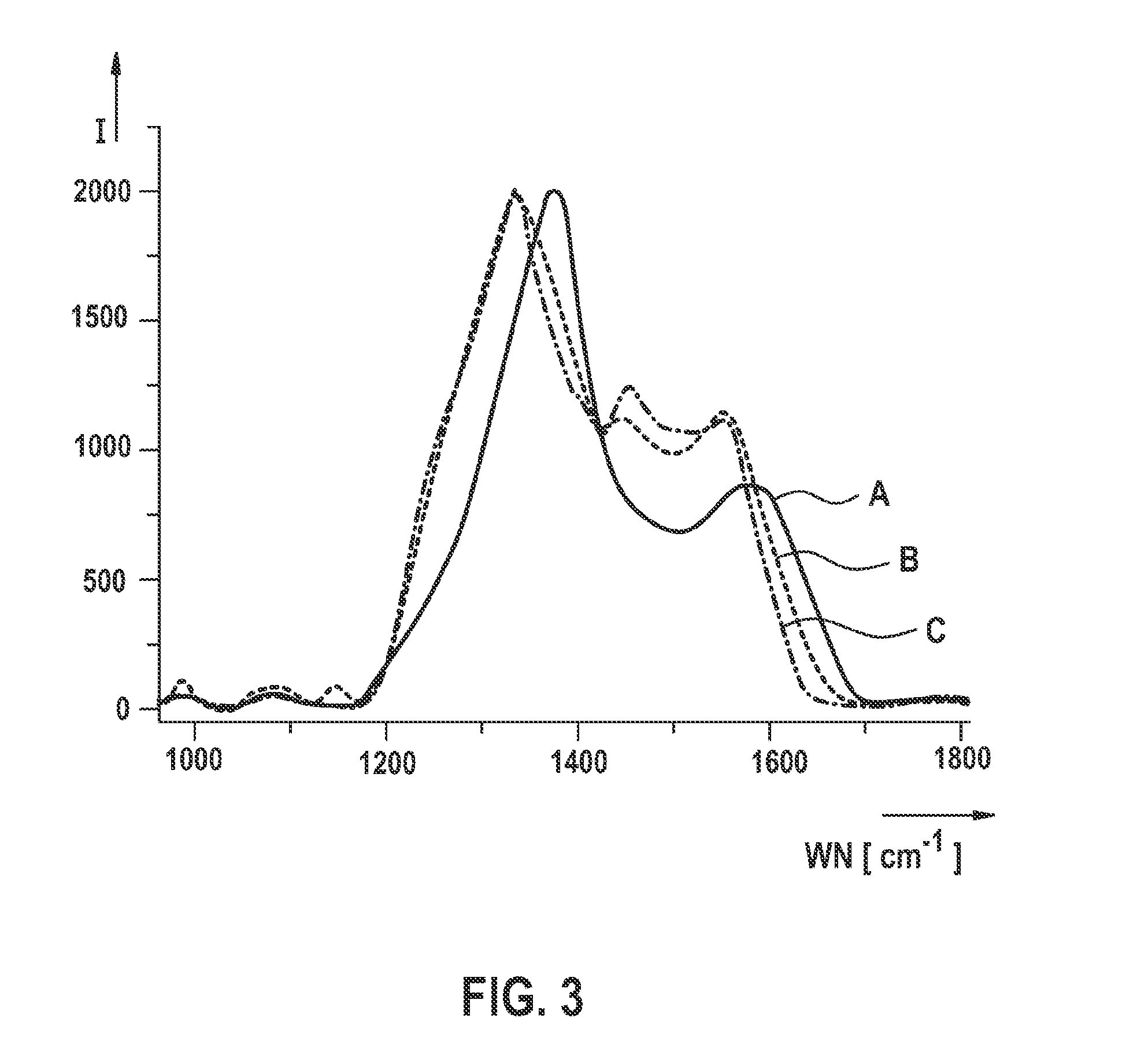Method for manufacturing a polyacrylonitrile-sulfur composite material
a technology of polyacrylonitrile and composite materials, which is applied in the direction of non-metal conductors, cell components, conductors, etc., can solve the problems of significant reduction of theoretical value and reduction of cycle stability, and achieve the effect of improving stability of cathode materials and improving the use of electrochemical energy stores
- Summary
- Abstract
- Description
- Claims
- Application Information
AI Technical Summary
Benefits of technology
Problems solved by technology
Method used
Image
Examples
Embodiment Construction
[0066]An example is shown hereafter of manufacturing a polyacrylonitrile-sulfur composite material according to the present invention or an active material based thereon or an electrode according to the present invention for a lithium-sulfur battery with a subsequent electrochemical characterization. In particular, a polyacrylonitrile-sulfur composite material is manufactured as described hereafter, the polyacrylonitrile-sulfur composite material having an sp2 hybrid proportion, with respect to the total carbon atoms included in the composite material, of greater than or equal to 85%.
[0067]For this purpose, polyacrylonitrile (PAN) is mixed with sulfur in a first method step at a ratio of 1:3 (wt.-%). The mixture is heated in an inert gas atmosphere to a temperature of 330° C. (comparison sample) or 550° C. (sample according to the present invention) for six hours. The thus obtained product is then immediately freed from excess elemental sulfur with toluene using a Soxhlet extraction...
PUM
| Property | Measurement | Unit |
|---|---|---|
| temperature | aaaaa | aaaaa |
| temperature | aaaaa | aaaaa |
| temperature | aaaaa | aaaaa |
Abstract
Description
Claims
Application Information
 Login to View More
Login to View More - R&D
- Intellectual Property
- Life Sciences
- Materials
- Tech Scout
- Unparalleled Data Quality
- Higher Quality Content
- 60% Fewer Hallucinations
Browse by: Latest US Patents, China's latest patents, Technical Efficacy Thesaurus, Application Domain, Technology Topic, Popular Technical Reports.
© 2025 PatSnap. All rights reserved.Legal|Privacy policy|Modern Slavery Act Transparency Statement|Sitemap|About US| Contact US: help@patsnap.com



